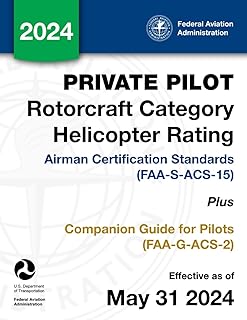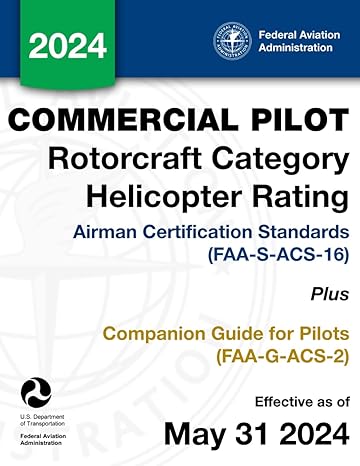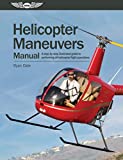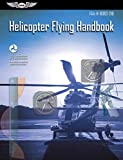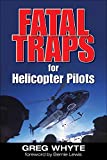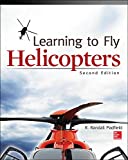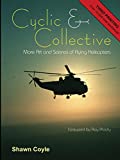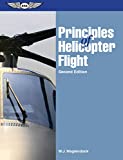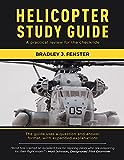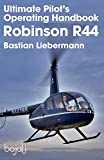This category covers Helicopter Flight Maneuvers at the Private and Commercial level with a few extras at the end. The videos below are unedited footage from inside the cockpit during these maneuvers. These are temporary videos that I produced for a presentation to aviation students at COCC. I have put them here as a reference for those students. In time these videos will be replaced by more comprehensive instructional videos with key points, common errors and the ACS requirements, but in the meantime, I hope you find these useful.
The full list of flight maneuvers covered by the FAA Private and Commercial Airman Certification Standards (ACS):
- Hovering Maneuvers
- Takeoff, Landing & Go-Arounds
- Airport & Heliport Operations
- Performance Maneuvers
- Emergency Operations
- Special Operations
- Extras
Pickup & Set-Down
Pickup
Set-Down
Private Commercial Hover Height ± 1/2 recommended hover. So 3’ hover = 1.5’ to 4.5’ ± 1/2 recommended hover. So 3’ hover = 1.5’ to 4.5’ Lateral Position Within 4’ of target
And no aft movementWithin 2’ of target
And no aft movementHeading ±10° but avoids conditions that might lead to LTE ±10° but avoids conditions that might lead to LTE
Slopes
| Private | Commercial | |
|---|---|---|
| Maintain Heading | ±10° | ±5° |
- Selects a suitable slope, approach, and direction considering wind effect, obstacles, dynamic rollover avoidance, and discharging passengers
- Makes smooth positive descent to touch the upslope skid on the sloping surface
- Maintains positive control while lowering the downslope skid or landing gear to touchdown
- Recognizes if slope is too steep and abandons the operation prior to reaching cyclic control stops
Hover Taxi
Private Commercial Hover Height ± 1/2 recommended hover. So 3’ hover = 1.5’ to 4.5’ ± 1/2 recommended hover. So 3’ hover = 1.5’ to 4.5’ Lateral Position Within 4’ of ground track Within 2’ of ground track Pedal Turn Position Within 4’ of pivot point Within 2’ of pivot point Pedal Turn Heading 360° turn left & right, stopping within ±10° 90°, 180° & 360° turns, stopping within ±10°
- Demonstrating forward, sideward, and rearward hovering and hovering turns.
- Maintains constant rate of turn at pivot points.
Air Taxi
- Air taxies the helicopter from one point to another under headwind and crosswind conditions
- Selects a safe airspeed and altitude
- Maintains desired track and groundspeed in headwind and crosswind conditions, avoiding conditions that might lead to LTE
Normal Takeoff
Private Commercial Climb Airspeed ±10 knots ±5 knots
- Knowledge of factors affecting performance, to include height/velocity information
- Establishes stabilized hover, prior to takeoff in headwind and crosswind conditions
- Maintains proper ground track with crosswind correction, as necessary
- Remains aware of the possibility of wind shear and/or wake turbulence
Normal Approach
Private Commercial Over touchdown point ±4’ ±2’
- Knowledge of performance, to include height/velocity information
- Considers the wind conditions, landing surface, and obstacles
- Selects a suitable touchdown point
- Establishes and maintains the normal approach angle, and proper rate of closure
- Remains aware of the possibility of wind shear and/or wake turbulence
- Maintains proper ground track with crosswind correction, as necessary
- Avoids situations that may result in settling-with-power
Max Performance
Private Commercial Airspeed ±5 knots ±5 knots
- Considers situations where this maneuver is recommended and factors related to takeoff and climb performance, to include height/velocity information
- Utilizes proper control technique to initiate takeoff and forward climb airspeed attitude
- Utilizes the maximum available takeoff power
- After clearing all obstacles, transitions to normal climb attitude, airspeed and power setting
- Remains aware of the possibility of wind shear and/or wake turbulence
- Maintains proper ground track with crosswind correction, as necessary
Steep Approach
Private Commercial Over touchdown point ±4' ±2' Approach angle 15° max 15° max
- Considers situations where this maneuver is recommended and factors related to a steep approach, to include height/velocity information
- Considers the wind conditions, landing surface, and obstacles
- Selects a suitable termination point
- Establishes and maintains a steep approach angle, (15° maximum) and proper rate of closure
- Avoids situations that can result in settling-with-power
- Remains aware of the possibility of wind shear and/or wake turbulence
- Maintains proper ground track with crosswind correction, if necessary
Running Landing
- Knowledge of the purpose of the maneuver, factors affecting performance data, to include height/velocity information, and effect of landing surface texture
- Considers obstacles and other hazards
- Establishes and maintains the recommended approach angle and proper rate of closure.
- Remains aware of the possibility of wind shear and/or wake turbulence
- Maintains proper ground track with crosswind correction, if necessary
- Maintains a speed that will take advantage of effective translational lift during surface contact with landing gear parallel with the ground track
- Utilizes proper flight control technique after surface
Go-Around
Private Commercial Normal Climb Airspeed ±10 knots ±5 knots
- Knowledge of the elements related to a go-around and when it is necessary
- Makes a timely decision to discontinue the approach to landing
- Establishes proper control input to stop descent and initiate climb
- Maintains proper ground track with crosswind correction, if necessary
Traffic Patterns
Private Commercial Airspeed ±10 knots ±10 knots Altitude ±100' ±100'
- Knowledge of procedures at airports and heliports with and without operating control towers, prevention of runway incursions, collision avoidance, wake turbulence avoidance, and wind shear
- Complies with proper traffic pattern procedures
- Maintains proper spacing from other traffic or avoids the flow of fixed wing aircraft
- Corrects for wind drift to maintain proper ground track
- Maintains orientation with runway/landing area in use
Rapid Deceleration (Quick Stop)
| Private | Commercial | |
|---|---|---|
| Maintain Heading | ±10° | ±5° |
- Properly coordinates all controls throughout the execution of the maneuver
- Maintains an altitude that will permit safe clearance between the tail boom and the surface
- Decelerates and terminates in a stationary hover at the recommended hovering altitude.
Straight-in Autorotation
Private Commercial Rotor RPM (R22/R44) 90-110% 90-110% Airspeed ±10 knots ±5 knots Hover over target ±200' ±100'
- Selects a suitable touchdown area
- Initiates the maneuver at the proper point
- Establishes proper aircraft trim and autorotation airspeed
- Maintains rotor RPM within normal limits
- Compensates for windspeed and direction as necessary to avoid undershooting or overshooting the selected landing area
- Utilizes proper deceleration, collective pitch application to a hover
180 Autorotation
Private Commercial Rotor RPM (R22/R44) 90-110% 90-110% Normal Climb Airspeed ±10 knots ±5 knots Hover over target ±200' ±100'
- All turns must be complete by 300′ AGL
- Selects a suitable touchdown area
- Initiates the maneuver at the proper point
- Establishes proper aircraft trim and autorotation airspeed
- Maintains rotor RPM within normal limits
- Compensates for windspeed and direction as necessary to avoid undershooting or overshooting the selected landing area
- Utilizes proper deceleration, collective pitch application to a hover
Power Failure at Hover (Hover Auto)
Private Commercial Heading ±10° ±5° Lateral Movement minimum sideward, no rearward minimum sideward, no rearward
- Determines that the terrain below the aircraft is suitable for a safe touchdown
- Performs autorotation from a stationary or forward hover into the wind at recommended altitude, and RPM, while maintaining established heading
- Touches down with minimum sideward movement, and no rearward movement
- Exhibits orientation, division of attention, and proper planning
Power Failure at Altitude
Private Commercial Rotor RPM (R22/R44) 90-110% 90-110% Airspeed ±10 knots ±5 knots
- Establishes an autorotation and selects a suitable landing area
- Establishes proper aircraft trim and autorotation airspeed
- Maintains rotor RPM within normal limits
- Compensates for windspeed and direction as necessary to avoid undershooting or overshooting the selected landing area
- Terminates approach with a power recovery at a safe altitude when directed by the examiner
System/Equipment Failure
Analyzes the situation and takes action in at least three of the following areas—
- Engine, oil & fuel
- Hydraulics, if applicable
- Electrical
- Carburetor or induction icing
- Smoke and/or fire
- Flight control/trim
- Pitot static/vacuum & associated instruments
- Rotor and/or antitorque
- Vibrations
- Other emergency unique to the helicopter flown
Vortex Ring State (Previously Settling-With-Power)
Private Commercial Select altitude to allow recovery by 1,000’ AGL 1,000’ AGL
- Selects an altitude that will allow recovery to be completed no less than 1,000 feet AGL or, if applicable, the manufacturer’s recommended altitude, whichever is higher
- Promptly recognizes and announces the onset of settling-with-power
- Utilizes the appropriate recovery procedure
Low Rotor RPM Recovery
- Knowledge of low rotor RPM recovery and the combination of conditions that are likely to lead to this situation
- Detects the development of low rotor RPM and initiates prompt corrective action
- Utilizes the appropriate recovery procedure
Confined Area
- Establishes Accomplishes a proper high and low reconnaissance
- Selects a suitable approach path, termination point, and departure path
- Tracks the selected approach path at an acceptable approach angle and rate of closure to the termination point
- Avoids situations that can result in settling-with-power
- Terminates at a hover or on the surface, as conditions allow
- Accomplishes a proper ground reconnaissance
- Selects a suitable takeoff point, considers factors affecting takeoff and climb performance under various conditions
Pinnacle/Platform
- Establishes Accomplishes a proper high and low reconnaissance
- Selects a suitable approach path, termination point, and departure path
- Tracks the selected approach path at an acceptable approach angle and rate of closure to the termination point
- Avoids situations that can result in settling-with-power
- Terminates at a hover or on the surface, as conditions allow
- Accomplishes a proper ground reconnaissance
- Selects a suitable takeoff point, considers factors affecting takeoff and climb performance under various conditions
Zero-Speed Autorotation with 360 degree turn
- This maneuver itself is not required for Private or Commercial ratings, but maybe considered for ‘Enhanced training in autorotation procedures’ under SFAR 73, especially for a CFI SFAR 73 checkride.
- Otherwise it is good training to help a student become more confident and accomplished in autorotations generally and serves a real world purpose for possible engine failure in an out of ground effect hover over an confined area.
Resources
- FAA Private Pilot ACS
- FAA Commercial Pilot ACS
- FAA Helicopter Flying Handbook
- FAA Helicopter Instructor’s Handbook
- Robinson Flight Training Guide



